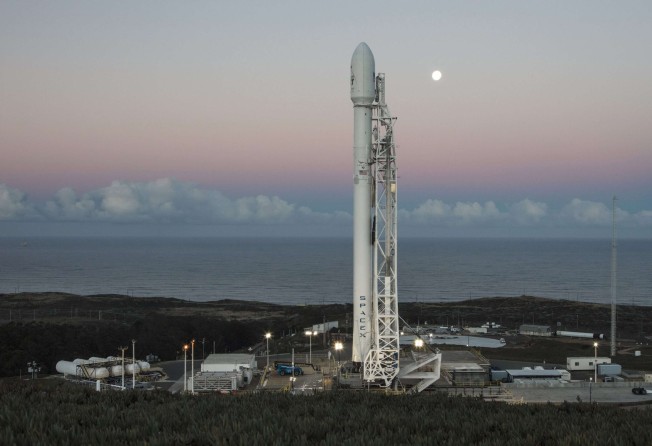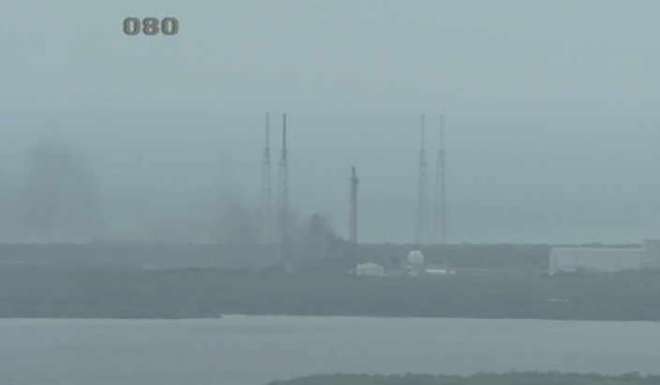SpaceX gears up for first flight since fiery launchpad accident
Company’s ambition of sending humans to Mars suffered setback when launch failed in November

Billionaire Elon Musk’s vision for his SpaceX to carry not just satellites but ultimately humans to Mars is at stake as the rocket maker prepares for its first flight since a fiery launchpad accident four months ago.
The blast, which Musk termed “the most difficult and complex failure we have ever had”, destroyed an Israeli satellite and a SpaceX rocket. Convinced it pinpointed the mishap’s cause, the company was scheduled to try again [overnight] on Saturday at California’s Vandenberg Air Force Base. At stake: proving to Nasa it can safely carry astronauts ahead of a manned test flight planned for next year.
“This will be a tough flight for us coming back after our event on September 1,” SpaceX Chief Operating Officer Gwynne Shotwell said in an interview on CBS on Friday morning. “A million things have to go right in order to have a successful launch.”
Musk, who is also the chief executive officer of Tesla Motors, founded SpaceX 15 years ago with the express goal of sending humans to Mars. The company makes rockets at its headquarters in Hawthorne, California and has contracts to launch commercial satellites as well as fly missions for Nasa and the US military.
SpaceX has been awarded Nasa contracts valued at US$4.2 billion to resupply the International Space Station via its unmanned Dragon spacecraft and to ultimately ferry astronauts to the station from the US.
The satellites aboard the Falcon 9 rocket this time are part of the Iridium NEXT constellation network, providing new and better communications services such as allowing air-traffic controllers to monitor planes flying over oceans anywhere in the world. Iridium, based in McLean, Virginia, is counting on SpaceX to take 70 new satellites into orbit via seven separate launches over the next 14 to 18 months.
The new constellation would enable Iridium to offer new services and to continue servicing existing clients without interruption. Its existing satellites are 19 years old, which is old by industry standards.
SpaceX plans to recover the rocket’s first stage on an unmanned drone ship bobbing in the ocean, a feat it accomplished four times in 2016.

Nasa, which ended its 30-year space shuttle programme in 2011, is counting on partnerships with private industry to fly both cargo and crew. Last month, Nasa announced that SpaceX is targeting November for its first demonstration mission and May 2018 for the first demonstration mission that will have two astronauts aboard.
The September blast renewed concerns about the way that Falcon 9 rockets are fueled, particularly since SpaceX has proposed to have astronauts board its Dragon ship before propellants are loaded. For crews, the Dragon is designed with a launch abort system to ensure safety; the September 1 blast occurred during the final phase of fuelling for a pre-launch test. No one was injured.
“Nasa is continuing its evaluation of the SpaceX concept for fuelling the Falcon 9 for commercial crew launches,” the agency said in a November statement. “The results of the company’s September 1 mishap investigation will be incorporated into Nasa’s evaluation.”
SpaceX expects to do a lot more, with a lot more responsibility
An accident investigation team led by SpaceX “concluded that one of the three composite overwrapped pressure vessels inside the second stage liquid oxygen tank failed,” the company said in a statement earlier this month. The September failure probably resulted from an oxygen build-up and the company is taking corrective actions, according to the statement.
The Wall Street Journal reported on Friday that SpaceX’s June 2015 mishap, which destroyed a Falcon 9 rocket with cargo destined for the International Space Station, as well as the one in September have contributed to a drop in revenue.
“We have more than 70 future launches on our manifest representing over US$10 billion in contracts,” SpaceX Chief Financial Officer Bret Johnsen told the Journal. “The company is in a financially strong position and is well positioned for future growth.”
Shotwell said the company wants to launch 20 to 24 rockets this year, an aggressive launch cadence given that eight successful missions were completed in 2016.
“It’s very crucial that it’s a successful launch,” said Marco Caceres, senior analyst at consultant Teal Group in Fairfax, Virginia, in a phone interview. “Every launch has to be flawless because SpaceX will eventually launch astronauts to the International Space Station. SpaceX expects to do a lot more, with a lot more responsibility.”